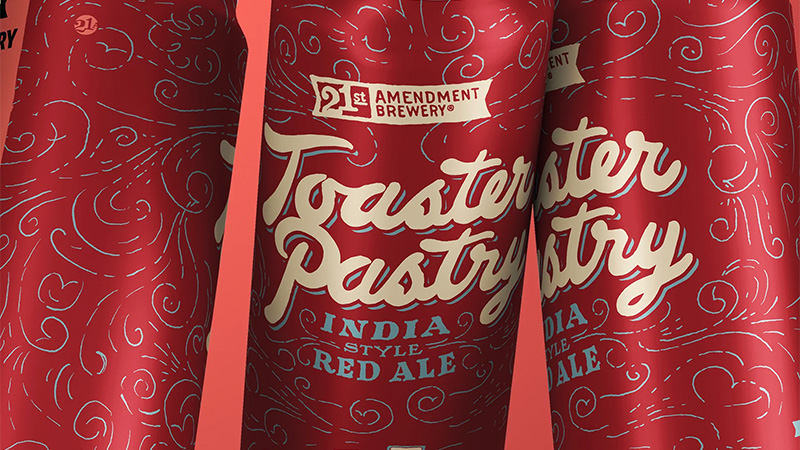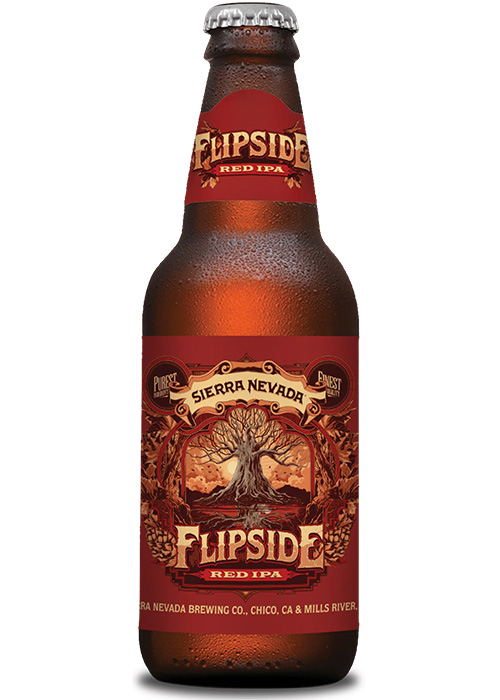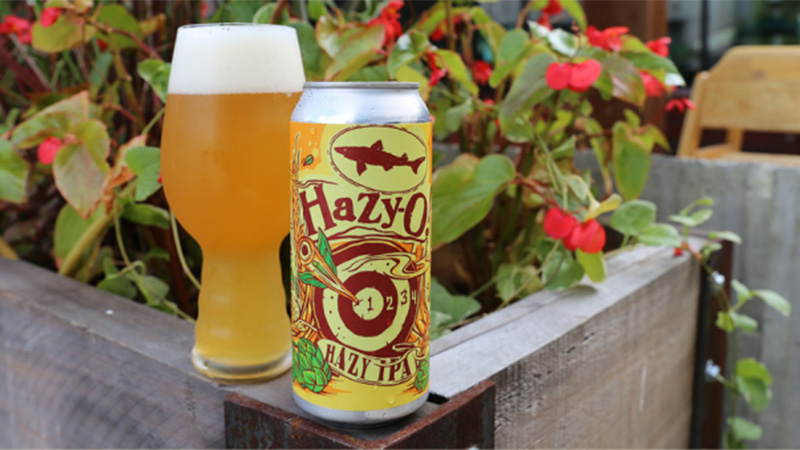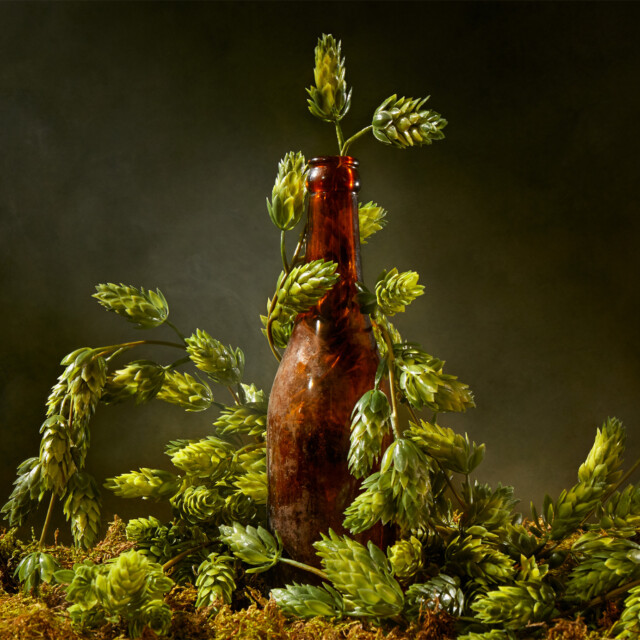Ska Brewing in Durango, Colo., annually collaborates with Venture Snowboards on a Ska-themed snowboard that might feature its logo, dapper skeleton mascot, or a new beer.
In January, brewery president and cofounder Dave Thibodeau hit the slopes with a Ska snowboard that outlived its advertised beer: Moral Panic, a bone-dry brut IPA that debuted in 2018 and disappeared in late 2021. A fizzy, fragrant, Champagne-inspired IPA couldn’t hack it in a world gone hazy.
While snowboarding, Thibodeau ran into a woman riding another Moral Panic board, one of five created. They high-fived. “She was like, ‘That was my favorite beer. I can’t believe they don’t make it any more,’” Thibodeau says. Her words cut deep. “To this day, it’s still one of our favorite beers that we’ve made.”
The IPA is American craft brewing’s version of fast fashion. Soon after new styles or techniques are developed, trendsetters are imitated nationwide and around the globe, as breweries capitalize on the latest craze. Like that Shein shirt, few IPA spinoffs endure, the rest tossed into a trash pile.
Once popular IPA variants that emphasized rye, wheat, or wild yeast have mostly vanished; session IPAs lost their low-alcohol luster; and abrasive imperial IPAs faced a harsh truth. “In retrospect, it was a bit of a mistake to try to make beers as bracingly bitter as we possibly could,” says Matt Brynildson, the brewmaster at Firestone Walker Brewing in Paso Robles, Calif. “There’s no wonder they didn’t hold on as a long-term trend.”
A Creative Boom Led to Many IPA Busts
Back in 2016, I mistakenly assumed America had reached peak IPA. Dry-hopped sour ales, milkshake IPAs, red IPAs, quadruple IPAs, wine-IPA hybrids, India pale lagers, citrus IPAs, coffee IPAs! Brewers had hopped everything, I thought, as I wrote “Complete IPA.”
The book serves as a half-finished time capsule filled with bright ideas gone dark. The mid-2010s were a moment when wild yeast, plucked from hair, apple orchards, or warm brewery air, felt like the future. Why not use Brettanomyces, a family of yeast known for its funky, earthy flavors, to make a Brett IPA?
Initially, brewing IPAs with Brettanomyces was on brand for Belgian-focused Allagash Brewing in Portland, Maine, which extensively experiments with wild yeast and spontaneously fermented ales. “We focused on having a direct tie to Belgian tradition,” says brewmaster Jason Perkins.
The fruity and gently acidic Brett IPA and lower-alcohol Little Brett stoked more confusion than repeat sales. “Who is Brett? Is that somebody’s name?” jokes Perkins. “Unless consumers are very educated, they don’t really know what it is.”
“The never-ending question we hear from consumers is, ‘Why did you take that beer away?’ Our first reaction, at least internally, is always, ‘Well, why didn’t you buy more of it?’”
Allagash has since rethought its approach, using a more neutral American ale strain in Hop Reach, its purposefully timeless year-round IPA redolent of pineapple and pine. “It maybe would have resonated five years ago and will resonate five years from now,” Perkins says.

Ten to 15 years ago, breweries were exploring the IPA color wheel. Caramel-rich red IPAs (Green Flash Hop Head Red, 21st Amendment Toaster Pastry), witbier-inspired white IPAs (Deschutes Chainbreaker, Otter Creek Fresh Slice), and bitter and roasty black IPAs (Stone Sublimely Self-Righteous, Firestone Walker Wookey Jack black rye IPA) brought a hue-focused approach to IPAs.
Color specificity slowly faded, in part because dark tints were matched to flavorful intensities. “Most black IPAs, and I will say that Wookey was one of them, were pretty extreme in their hopping rates,” Brynildson says of the brewery’s black IPA, which debuted in 2012.
Hindsight, thy name is 100 IBUs.
Seasonality was also a challenge. Who wants a bitter black IPA during summer? Firestone Walker discontinued Wookey Jack in 2016, later reviving it in 2020 as a limited-edition release aligned with fall or winter. “There’s a season for black IPA,” Brynildson says.
The beer industry is simultaneously complex and simple. If customers buy a beer, brewers will make more.
“The never-ending question we hear from consumers is, ‘Why did you take that beer away?’” says Kyle Ingram, the director of consumer insights and innovation for Sierra Nevada Brewing in Chico, Calif. “Our first reaction, at least internally, is always, ‘Well, why didn’t you buy more of it?’”

Sierra Nevada has a library of beloved retired IPAs like the rich and red Flipside and spicy Ruthless Rye, formerly fall and spring seasonal releases. Enough fans asked Sierra Nevada to revive the IPAs that the brewery began producing small batches, sold online and delivered to customers’ doorsteps. “That’s where our hardcore fans and loyalists like to participate,” Ingram says. (The brewery occasionally packages the IPAs in a fan-favorite variety pack, too.)
The recipes for the heritage IPAs remain largely unchanged, a liquid snapshot of a bygone era that still holds relevance. “They were good then, and they’re still good now,” Ingram says. “We believe they stand the test of time.”
Tweaking Language Can Save IPA Styles From the Recycling Bin
Nailing a recipe has never guaranteed an IPA’s success. The stylistic descriptor is an essential ingredient, making or breaking a new variant.
Wheat and oats are core components of many hazy IPAs, imparting a silky mouthfeel and hazy hue. But leading with the grains can be a misstep. Two Roads Brewing opened in Stratford, Conn., in 2012, with Honeyspot Road, a white IPA that highlighted wheat.
Two Roads later called Honeyspot an “unfiltered IPA with wheat,” before dropping the grain from the description. It was “perhaps a negative, because people associate wheat with gluten,” says brewmaster Phil Markowski. “We found it best to go back to basics and simply call it an IPA.”
Following in the footsteps of Founders Brewing’s All Day IPA, brewers in the mid-2010s rushed to release their own lower-alcohol, highly aromatic IPAs.
In 2019, Bell’s Brewery was off target in describing Official IPA, highlighting wheat and minimizing its biggest selling point: hazy. “The No. 1 thing we heard was, ‘The descriptor is really small. Can you make it bigger so people know it’s a hazy IPA?’” says brand manager Scott Powell. (Official, since retired, laid the groundwork for Hazy Hearted IPA. No confusion there.)
Bell’s also hit a speed bump with Oatsmobile Ale, a fragrant, oats-heavy pale ale featuring… a horse on its label? The beer’s haze and modern tropical hops (Mosaic, Ekuanot) could’ve made Oatsmobile a hit, but “we just did a really bad job describing it to people,” Powell says.

Oat milk is a mainstream staple at coffee shops and supermarkets. In 2021, Dogfish Head harnessed oat milk’s silkiness and healthy halo for its Hazy-O! IPA, “but I think seeing the phrase ‘oat milk’ on an IPA is subliminally polarizing,” founder and president Sam Calagione says of the since-discontinued IPA. The brewery still experiments with oats and oat milk, although “we’re not putting that as prominent in the branding.”
IPAs Aren’t Always in Session
The phrase “session IPA” once looked like a cheat code to skyrocketing sales. Following in the footsteps of Founders Brewing’s All Day IPA, brewers in the mid-2010s rushed to release their own lower-alcohol, highly aromatic IPAs like Lil’ Heaven, from Two Roads.
In some markets, Two Roads found “downright hostility toward the term,” Markowski says. The brewery has since changed Lil’ Heaven’s label to call it a “crushable IPA,” but rehabbing the 95-calorie Wee Demon IPA might be harder. It’s one of the brewery’s lowest-selling IPAs, never really resonating with a waist-conscious crowd that is “likely going for something like Michelob Ultra versus an IPA,” Markowski says.
This May, Dogfish Head will update the label for its 95-calorie Slightly Mighty IPA, which sells well in 12-packs by swapping out “lo-cal IPA” in lieu of “light IPA.” The linguistic tweak will hopefully “be more appealing to today’s IPA drinker,” Calagione says.
The gears of innovation and experimentation will never stop churning for IPAs. But with open shelf space harder to come by, breweries are getting more tactical about debuting new IPAs. Variety packs are proving grounds for the next generation of IPAs. Bell’s has an experimental black IPA in its Hearted IPA pack, while Dogfish Head’s spring variety pack includes Colderest, a cold IPA brewed with winter wheat, flash-frozen fresh hops, and lager yeast.
“We can bring innovation into that shelf space that we already have,” Calagione says.
Will the cold IPA be the next fad to burn hot and then, well, go cold? Ska’s Thibodeau is so bullish on the crisp, aromatic style’s staying power that Ska recently released the Cold Pale Ale and perhaps the world’s very first Mexican-Style Cold IPA, which is brewed with corn, agave nectar, and Mexican lager yeast.
“We’re totally on the IPA train,” Thibodeau says.
The thing about trains, though, is you never know when they might derail.
